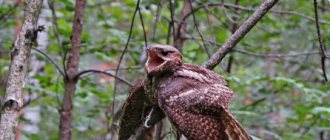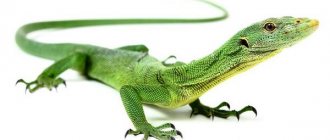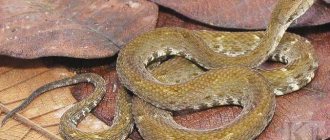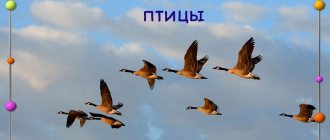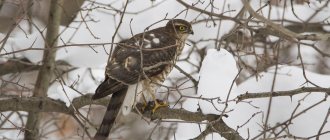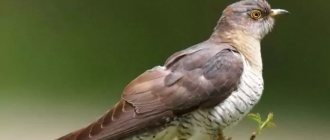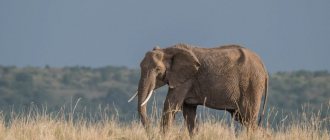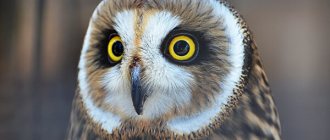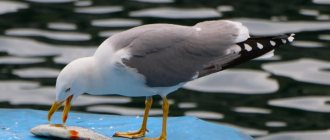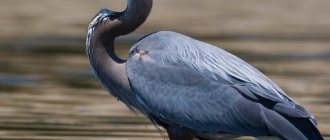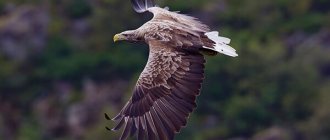In the Southern Urals the geography of the earth's surface is quite diverse. This includes the presence of mountains, forests and valleys. The climate in the region is continental, with cold winters alternating with hot summers. The many rivers and lakes in this area contribute to the variegated diversity of birds. Birds of the Southern Urals can be divided into waterfowl and forest birds, predators and those protected by the Red Book. There are birds that leave their homes in winter in search of a warmer place to live and more food. Others remain true to their range and endure the winter cold with patience.
In the article we will look at the birds of the Southern Urals, the names of some are known to everyone - sparrow, crow, rook, tit, goldfinch, siskin, magpie, etc., others are more rare. People who live in cities and are far from the Southern Urals have not seen many, and have only heard about some. These are the ones we will pay special attention to.
Steppe birds
More than 60 different species of birds live in the steppe and forest-steppe zones. There are many rodents on the plains, which birds of prey feed on.
The photo shows a white-tailed eagle in flight.
Here are some of the steppe birds:
- Imperial Eagle;
- white-tailed eagle;
- snake eagle;
- falcon;
- merlin;
- saker falcon;
- black vulture;
- harrier - field, meadow, marsh, etc.
Osprey
This is also an extremely rare species of feathered predator, although these winged creatures can be found in various areas of the planet, although not often. Like the white-tails described above, ospreys are also large and take root well near clean bodies of water, where they feed on fish.
They track it, rising high above the surface of the water, and then dive into the depths, catching prey upon subsequent takeoff. The catastrophic decline in the number of such birds is greatly facilitated by the disgusting ecology and the activities of poachers.
Merlin
Let's take a closer look at one of the birds of the Southern Urals called Merlin. This is a small falcon with a body length of 24-35 cm.
This is a very rare bird that avoids dense forests, preferring open steppes or the banks of rivers and lakes. Like many birds of prey, the merlin's diet consists of small rodents, birds, lizards, and even catches insects.
Such a bird makes its nest not in trees, but on the ground, among stones - in rock crevices. The merlin lives in natural conditions up to 11 years of age; from each clutch the female incubates 3 to 4 ocher-colored eggs with brown spots.
The color of an adult bird helps it to be invisible among stones and steppes. On top, the feather covering is brownish-gray; on the belly, the plumage is white with dark brown spots. Hunts at low altitude and folds its wings when picketing.
Vulture
Not all predators prefer fresh meat and hunt for living prey; there are also scavengers among them. The vulture is a relative of the hawk. And both of these birds are members of the same hawk family. But unlike the relatives just described, vultures eat carrion, that is, the corpses of fish, reptiles and small mammals.
They look for their prey from a flight altitude, and often find it in a cluster of magpies, crows and kites, which also have a taste for carrion. Having fallen down like a stone, the vultures rush to the desired prey. And if the corpses are large, a dozen or more of these birds can gather around them.
Vultures are creatures that do not inspire sympathy with their way of life and feeding. And they don't look particularly attractive. First of all, their feather outfit is painted in mourning tones. Their beaks are hooked. The necks are bare, long, but ugly curved, like snake heads, with the impression that they are pulled into the shoulders; and huge goiters stand out on them.
These are very large birds of prey . The largest of them are capable of growing up to 120 cm in height. And their huge wings with a three-meter span are impressive. But in essence, such creatures are harmless, although somewhat gloomy in appearance, and are even environmental health workers. The range of giant scavengers is also extensive and spreads almost all over the world, but most of these birds are in Africa.
Vultures are one of those predators that love to feast on carrion.
Forest Dwellers
In the forests of the Southern Urals, birds are divided into inhabitants of larch or mixed forests and coniferous ones. The capercaillie is considered one of the largest representatives of birds, weighing up to 6 kg. The bird is named after the type of behavior of the male during the mating period. He is so busy looking for the female that he is completely deaf to the steps of the hunters, which makes them incredibly happy.
In the photograph you can see a capercaillie showing.
Black grouse are found on forest edges. It is, of course, much smaller than the capercaillie, but is also considered a large bird. The weight of a male can reach 1.4 kg. Black grouse most often wanders on the ground in search of food, but if necessary, it flies almost vertically onto branches. It also feels great in the trees, and also flies quickly for a couple of kilometers, although it looks like a chicken.
Kite
In flight, the kite is tireless and can be invisible in the sky, it soars so high. Such creatures are able to soar for up to a quarter of an hour without a single flap of their narrow and long wings, but their reactions are slow, and their behavior is lazy and clumsy. Sometimes they make melodious trills, in some cases they make sounds similar to neighing.
Kites have a variety of colors, but for the most part they are dark. Their legs are short and their weight is no more than a kilogram. The fingers and beak are weaker than those of a hawk, and the claws are less curved. Mostly kites consume carrion, but sometimes they also hunt live prey: hares, bats, crustaceans, fish, and other small organisms.
They live on the coasts and swamps of Eurasia, Africa, and Australia. They stay and fly in groups. These birds are still classified in the same hawk family.
Nuthatch
Let's take a closer look at another bird of the Southern Urals, whose name is the common nuthatch.
This is a nimble small bird that lives in any type of forest. It moves deftly and quickly along branches and even a tree trunk; it is often seen upside down on the bark. Its size is only 14 cm, it weighs up to 25 grams. The body is dense with a small head and a long beak. The color of the plumage may vary depending on the area of residence. Most often, this is an orange lower part, gray wings and the crown of the head, the eye area has a black even stripe that turns into a beak, and the chin is light. It is considered a noisy bird, changing several whistles when singing. Nearby you can see woodpecker, hazel grouse, waxwing, cuckoo, thrush, nightingale, titmouse, chaffinch and other forest birds.
Traveling birds
Some birds have adapted to the harsh conditions of the Ural winters. These are the well-known sparrow and bullfinch, pigeon and tit, crows and jackdaws, magpies, the nuthatch and jay described above, waxwing and hazel grouse. The birds of prey of the Southern Urals also remain for the winter. These are the night hunter owl, eagle owl listed in the Red Book, falcon and hawk. Naturally, large birds - capercaillie and black grouse, their relative the pheasant - do not go anywhere either. The crossbill in the coniferous forest also has enough cone seeds.
In the photo below, a migratory bird with bright plumage is the goldfinch.
Migratory birds of the Southern Urals include the following individuals: goose, swan, rook, nightingale, swallow, wagtail, quail, lark, starling and siskin, goldfinch and finch, swift and robin. Herons and cranes living near the water also fly to warm nesting places. Blackbirds, storks, cuckoos and orioles do not hibernate either. The list could take a long time, since the world of birds in the Urals is huge.
Petrel
This is also a sea soaring predator, a relative of albatrosses, belonging to the same order. The courage of this bird and the beauty of its flight were sung by poets and writers and reflected in their masterpieces by artists. The shearwater family is numerous. One of its members is the common petrel.
It does not belong to the category of large ones, usually not exceeding 35 cm in size. Such birds are common in the Azov and Black Seas, as well as in the waters of the North Atlantic. Their plumage is dark above and white below. These predators feed on crustaceans, mollusks and small fish.
Wagtail
Let's take a closer look at a representative of migratory birds - the wagtail.
There are two types of wagtails - yellow and white. Since the first one is quite rare in this area, let’s talk about the white individual. These birds live in small flocks near water bodies; they make nests in crevices of rocks, under bridges or directly on the soil. The nests have a loose shape, made up of thin twigs; inside the birds carefully line the bottom with scraps of wool and even hair. They nest twice during the summer. When they prepare for migration in the fall, they gather in large flocks.
Birds of the Red Data Book of the Southern Urals
Thanks to monitoring of rare bird species in this area, ornithologists added another 74 species of birds to the Red Book of the Southern Urals. This is due to the expansion of human economic activity, illegal activities of people in natural reserves, the number of roads and vehicles, the victims of which are often birds.
The photo below is of a demoiselle crane.
Due to effective conservation measures, some individuals included in the list of rare birds multiplied and were proposed to be deleted from the book. This is good news. For example, avocets have bred a lot, but a limited number of them live in the Southern Urals. And some were transferred to Appendix No. 3 of the Red Book, which means that the number is beginning to increase, as an example, the situation with the stilt, avdotka and shelduck. But the black stork, unfortunately, is excluded from the list for a completely different reason. For several years now, he has never been seen in the Southern Urals.
The photo shows a rare bird, the dipper.
The birds described above can also be found in the Red Book. These are the merlin and saker falcon, the steppe eagle and some species of harriers, etc. Endangered birds of the Southern Urals - photos and names can be found in the publication published in 2005. Let's take a closer look at one unique bird.
Kea parrot
This resident of New Zealand is famous for his special intelligence, playful disposition, curiosity and trust in people. The height of such parrots is slightly less than half a meter. The color is quite noticeable and consists of brownish, green, olive and red tones.
Keas inhabit forests and are often found in the mountains. And although they often feed on fruits and nectar, spinning around human habitation in search of suitable delicacies from garbage waste, they are still predators; in conditions of severe food shortages, kea attacked flocks of sheep, pecking out large wounds on their backs, due to why the animal died.
Dalmatian pelican
This species is larger in size than its pink counterpart. It got its name from the presence of curlicues on the feathers on the parietal part of the head.
The plumage of the species is light gray, and the sac on the beak is distinguished by a bright orange spot. This is a very large bird, reaching a length of 180 cm; its open wings are almost 3.5 m.
The Dalmatian pelican is an excellent flyer, often soaring in the sky with its huge wings spread wide. Spends a lot of time on the surface of the water, resting and eating fish. The bird's feathers get wet in the water, so he tries to raise his wings as high as possible, and then dries them for a long time with his beak. Because of this feature, it also does not dive for fish, but waits for it to approach. Then it lowers only its beak into the water and grabs the prey. On the ground it moves funny, rolling from side to side. It rises freely from the surface of the water.
Dalmatian pelicans live in small groups, and only when migrating to warmer regions do they unite into huge flocks, the number of birds in which can reach 300 individuals. Nests are built by a family of pelicans together. The male brings branches, and the female arranges them in an ugly heap, with the parts being held together by droppings. You can find nests in reed thickets or on floating islands.
The article briefly describes only a few birds living in the Southern Urals. If you are interested in the topic, you can view all the photographs of the birds mentioned in the article on the Internet. Take care of the surrounding nature!
Albatross
Since we are talking about the art of soaring, it is simply impossible not to talk about the albatross family, whose members are sea predators. For the most part, all types of albatrosses have white plumage, sometimes the tips of the wings and some other places have a dark edging. The largest member of the family is the royal albatross.
The body weight of such birds can exceed 10 kg, and their wingspan reaches 3.7 m. Albatrosses are distributed mainly in the ocean waters of the Southern Hemisphere. They are often found on islands remote from other parts of the land, where they raise their chicks.
They feed on marine invertebrates. Looking out for their prey, they soar above the waves. And having noticed something interesting, they are forced to either go down to the water surface or rise higher from it. And something like this also requires great skill.
